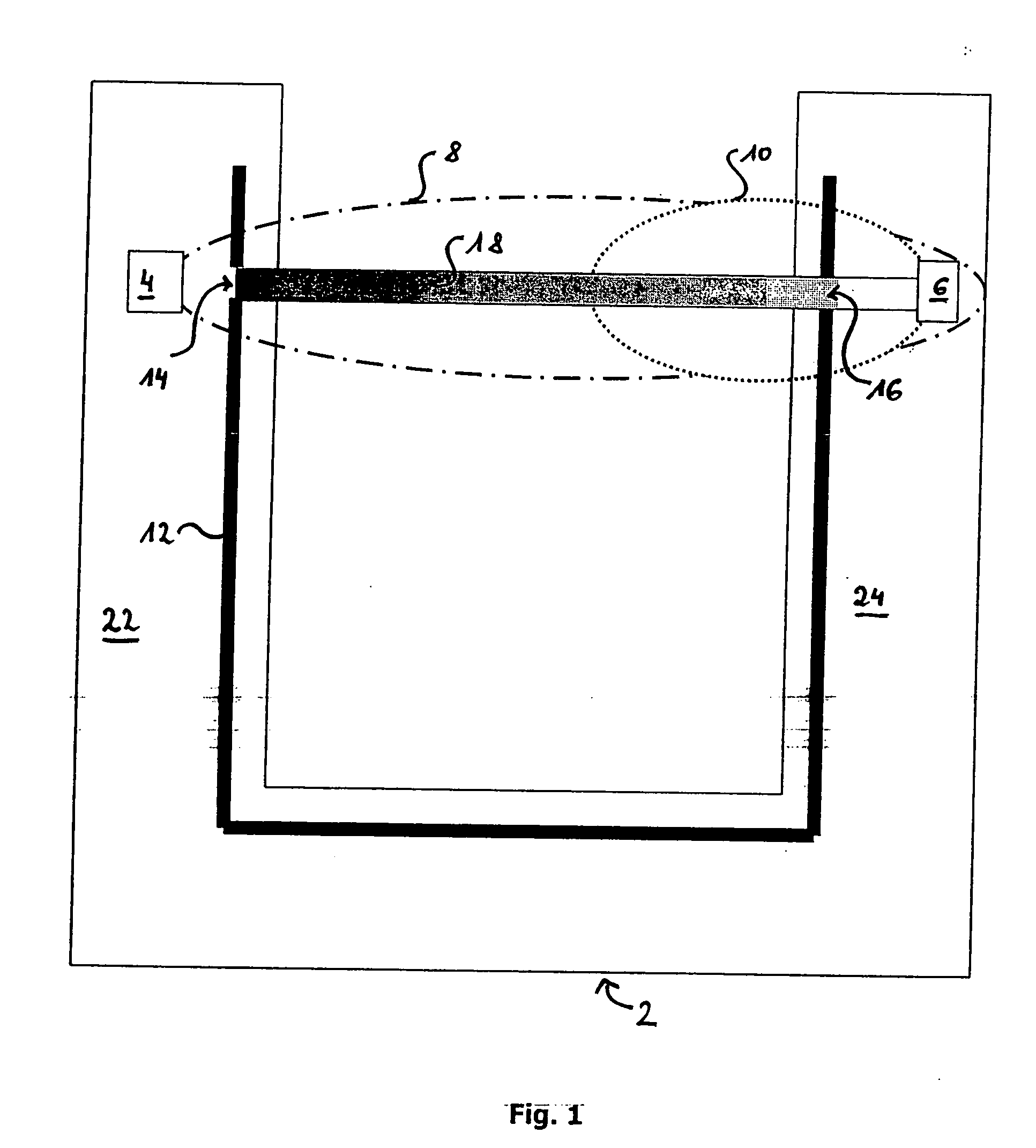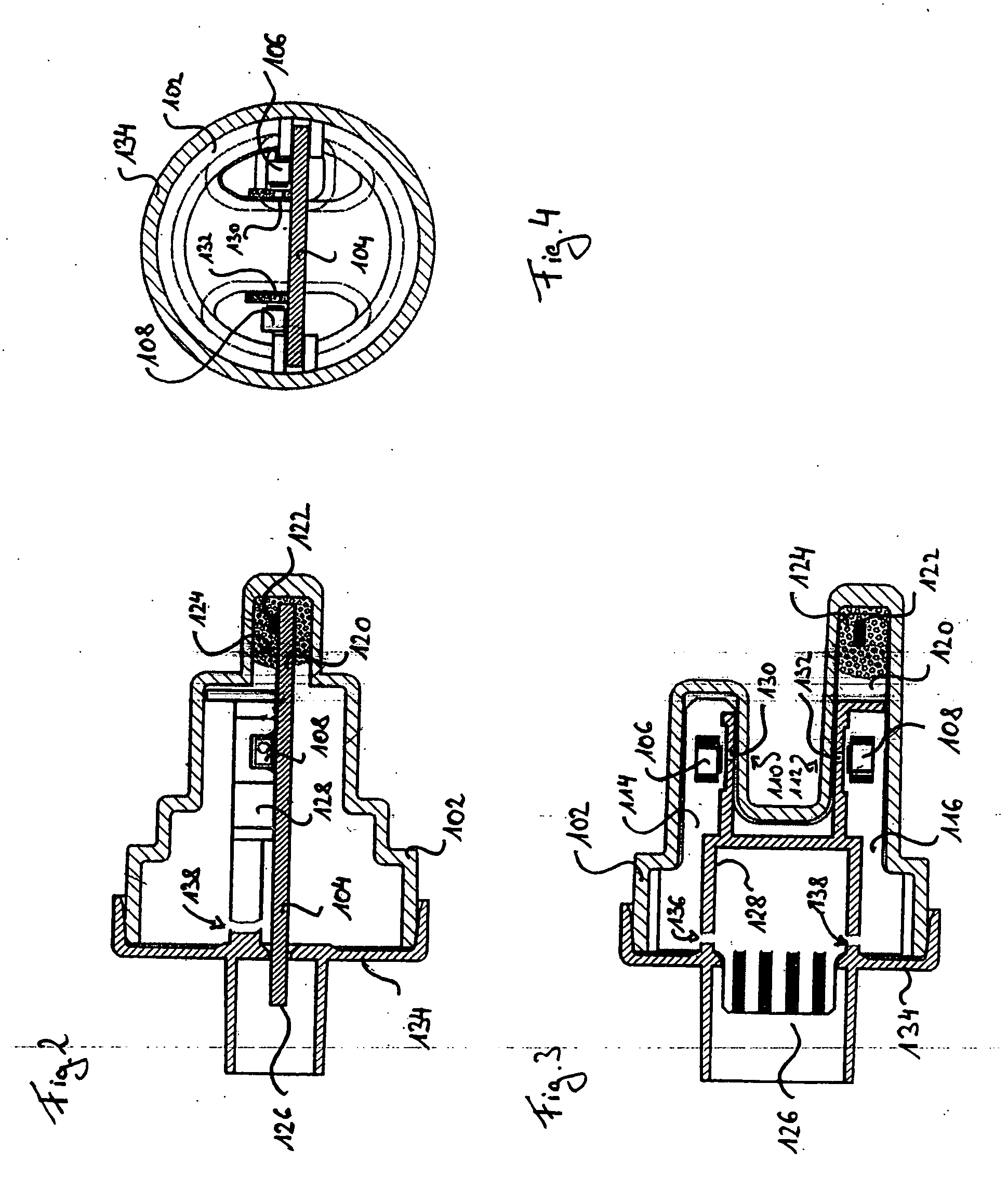Turbidity sensor
a technology of turbidity sensor and turbidity measurement, which is applied in the direction of cleaning equipment, tableware washing/rinsing machine details, instruments, etc., can solve the problems of complex production process, high production cost, and inability to accurately produce lenses, etc., to achieve precise transmission measurement and production in a simple and economical manner
- Summary
- Abstract
- Description
- Claims
- Application Information
AI Technical Summary
Benefits of technology
Problems solved by technology
Method used
Image
Examples
Embodiment Construction
[0055] The simplified view of a sensor according to the invention in FIG. 1 shows a carrier 2 on which are attached a transmitter 4 and a receiver 6. As a carrier 2 is preferably provided a circuit board designed for SMD technology. As transmitter 4 and receiver 6 are provided optical components to provide an optical measurement section. For example as a transmitter 4 an LED can be used while as a receiver 6 a photo transistor, a photo diode or a solar cell can be used.
[0056] The transmitter 4 has an emission characteristic indicated by the dashed outline 8. The receiver 6 has a reception characteristic indicated by the dashed outline 10. The emission characteristic 8 and reception characteristic 10 show for the sake of simplicity only the transmitter and receiver main lobes of the transmitter 4 and receiver 6; secondary lobes of both the transmitter 4 and receiver 6 are not shown.
[0057] Also arranged on the carrier 2 is a diaphragm system 12 which is spaced both from the transmit...
PUM
| Property | Measurement | Unit |
|---|---|---|
| aperture angle | aaaaa | aaaaa |
| lengths | aaaaa | aaaaa |
| transmission | aaaaa | aaaaa |
Abstract
Description
Claims
Application Information
 Login to View More
Login to View More - R&D
- Intellectual Property
- Life Sciences
- Materials
- Tech Scout
- Unparalleled Data Quality
- Higher Quality Content
- 60% Fewer Hallucinations
Browse by: Latest US Patents, China's latest patents, Technical Efficacy Thesaurus, Application Domain, Technology Topic, Popular Technical Reports.
© 2025 PatSnap. All rights reserved.Legal|Privacy policy|Modern Slavery Act Transparency Statement|Sitemap|About US| Contact US: help@patsnap.com



